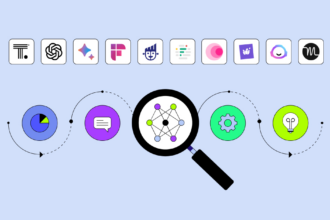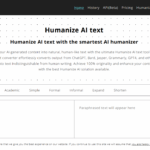If you’re a tech enthusiast, you’ve likely heard about the revolution in digital communication – a symbiotic relationship between neural networks and speech synthesis. And right at the heart of this innovation? A rising star, SpeechGen.io.
Understanding SpeechGen.io and its Neural Network Based Technology
A. What is SpeechGen.io?
In layman’s terms, SpeechGen.io is a cutting-edge tool that transforms text into incredibly natural-sounding speech. This isn’t your grandparent’s robot voice – the output is smooth, life-like, and engaging.
B. The Role of Neural Networks
But how does it achieve this? The secret sauce is in the neural networks – complex algorithms that learn and imitate how humans naturally speak. They’ve been trained on countless hours of human speech, soaking up intonations, pauses, and accents until they can replicate them with remarkable accuracy.
The Applications of Speech Synthesis in Social Media
Speech synthesis is no longer confined to sci-fi movies; it’s popping up all over social media. Here are three key ways it’s being used:
A. Accessibility
Social media is for everyone, but not everyone can access it equally. Speech synthesis, as offered by SpeechGen.io, is changing that, transforming text posts into audio, opening up a world of content for those with visual impairments or dyslexia.
B. User Engagement
Interactive content is king on social media. Speech synthesis can bring a whole new dimension to your posts – think AI narrated blog posts or voiceovers for your Instagram Stories.
C. Multilingual Communication
In our global village, you’re just as likely to have a follower from Korea as from Kansas. Speech synthesis breaks down language barriers, translating and vocalizing posts in various languages.
Case Studies of Speech Synthesis in Social Media
The following case studies reveal the diverse applications of speech synthesis technology on social media. Let’s take a closer look:
- Narration for YouTube Videos: Many YouTubers are utilizing speech synthesis technology to provide narration for their videos. They input their scripts and SpeechGen.io converts the text into a seamless voiceover, saving them time and resources in creating compelling content.
- Language Translation for Influencers: Global influencers are utilizing speech synthesis tools like SpeechGen.io to translate their content into multiple languages. By offering audible translations, they’re connecting with a wider international audience, removing the barrier of language and improving overall fan engagement.
- Audio Descriptions on Instagram: Instagram users, particularly those focusing on travel or food content, are employing speech synthesis to add an auditory dimension to their posts. This enhances the storytelling aspect, engaging more senses and providing an immersive experience for their followers.
- Accessibility on Facebook: Users and groups on Facebook utilize speech synthesis technology to make their content more accessible. By transforming written posts into audio, they’re ensuring visually impaired users or those with reading difficulties are not left out.
- Twitter News Bots: Some Twitter accounts automatically share news updates using synthesized speech, making it easier for followers to catch up on the latest events without reading through lengthy articles.
- Podcasting on Spotify: Content creators are using speech synthesis tools to produce podcasts on Spotify. These AI-narrated podcasts can offer a more polished and professional sound without the need for expensive equipment or editing software.
- Voice Commands on Snapchat: Snapchat employs speech synthesis in its voice command feature, allowing users to control the app using their voice. This offers an alternative, hands-free method of interaction, enhancing user convenience.
- AI Hosted Live Streams: Live streams on platforms like Twitch or YouTube sometimes use synthesized speech to interact with the audience. The AI voice can read out chat messages, allowing streamers to focus on their performance or gameplay.
- Customer Support on Business Pages: Many business pages on social media use chatbots equipped with speech synthesis for customer support. This provides immediate, 24/7 assistance to customers, improving their overall experience.
- Learning Platforms on Social Media: Educational platforms use speech synthesis to offer audio-based learning materials on their social media pages. This accommodates different learning styles and makes content more digestible.
- Automated Post Reading on LinkedIn: Professionals often use speech synthesis to catch up on LinkedIn posts during commutes. The technology can read out articles or updates, turning idle time into productive learning moments.
- Interactive Ads on Social Media: Some brands create interactive ads with synthesized speech. These ads can answer user questions or provide additional information about the product or service, making the ad experience more engaging and personalized.
These diverse examples showcase the transformative potential of speech synthesis technology, particularly when powered by advanced tools like SpeechGen.io. As we move forward, we can only expect these applications to grow and become even more integral to our social media experience.
The Future of Speech Synthesis in Social Media
Imagine a future where your favorite podcast is narrated by AI, or your news feed is read to you every morning by a voice that sounds human, but isn’t. That future is closer than you think. Tools like SpeechGen.io, with their evolving algorithms, are likely to be at the forefront of this transition, making synthesized speech a common part of our social media experience.
Conclusion
From accessibility to global communication, speech synthesis is making our social media more engaging, inclusive, and interactive. As tools like SpeechGen.io continue to evolve, we’re set to see even more transformations in our digital communications. And you know what? We can’t wait to see what comes next.














